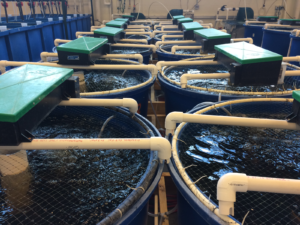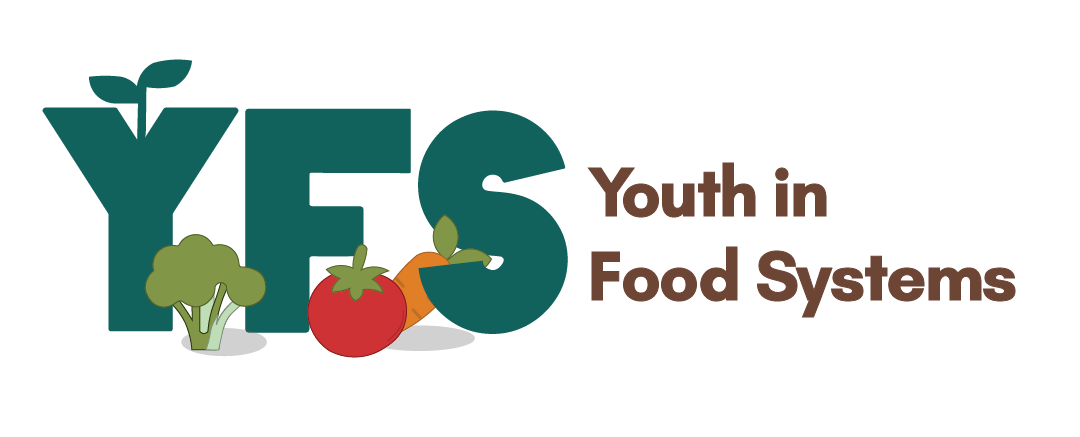Written by: Alishba Khursheed
Edited by: Alessa Zaitseva
Designed by: Rashiqa Ali
Published by: Andrew Jackson
Imagine an ecosystem where fish and plants work together: fish waste naturally fertilizes the plants, and the plants, in turn, purify the water for the fish. Thankfully, Dr James Rakocy was able to bring this idea to life with a commonly used yet not commonly known farming practice called aquaponics.
If you’ve never heard of the term before, it may seem intimidating. But before understanding aquaponics, we must first understand aquaculture and hydroponics– the two terms that birthed this intriguing system.
 Aquaculture, also known as aquafarming, is the farming of aquatic organisms such as fish, shellfish, and seaweed. It encompasses the breeding, raising, and harvesting of these animals in controlled environments. It helps meet increasing global seafood demands and combats overfishing.
Aquaculture, also known as aquafarming, is the farming of aquatic organisms such as fish, shellfish, and seaweed. It encompasses the breeding, raising, and harvesting of these animals in controlled environments. It helps meet increasing global seafood demands and combats overfishing.
Hydroponics, on the other hand, is a technique where plants are grown using a nutrient-rich water solution instead of traditional soil. Plants are placed in a container with some kind of organic growing medium (such as gravel or sand) and their roots are exposed to the nutrient-rich water. The solution is carefully formulated to ensure the plant is provided with all the essential nutrients it needs to grow. Hydroponics is essentially cultivating crops in an artificial environment, without the use of soil.


Since aquaponics is a combination of these two farming methods, its name reflects this fusion: it comes from the “aqua” in aquaculture and the “ponics” in hydroponics. Now that we know what both of these methods are, how exactly do they come together in aquaponics?
The Aquaponics Cycle
In an aquaponics system, the fusion of the two methods used is not noticeable at first glance, since the fish are typically raised in a separate container and the plants are also kept in their respective space with the two only being connected by pumps. However, the science behind aquaponics goes a lot deeper than that.
Let’s start with the fish. The fish are fed by the breeder, and like any organism, subsequently produce waste. This waste is in the form of ammonia which is highly toxic to fish in high concentrations and cannot be kept in the tank for long. However, plants are also not able to absorb ammonia very well. This leads to the introduction of a third party: nitrifying bacteria. This bacteria is crucial in a process that you may recall from school: the nitrogen cycle. Water containing fish waste, uneaten food, and decaying plant matter will then pass through a biofilter. The biofilter is where the beneficial bacteria lie.
Essentially, this bacteria will convert the harmful ammonia (NH3) into nitrate (NO3). This is called nitrification. The nitrate produced in this process is a natural nitrogen-rich fertilizer which, after the water crosses the biofilter into the plant container, will promote plant growth. The plant roots will take up the nitrate and other minerals or nutrients, filtering the water before it’s returned to the fish tank, free of ammonia or any unwanted matter that could be harmful to the fish.
The fish and the plants are both able to provide for each other with the help of bacteria and one cannot live without the other in this genius system. It allows for healthy fish and an abundance of crops all in one.
Benefits
With all that said, why is an aquaponics system better than investing in separate aquaculture and hydroponics systems? It comes down to sustainability, efficiency, and reduced environmental impact.
A key difference between aquaponics systems and others is the water use. With aquaponics being a self-fertilized form of farming, it’s actually a lot more beneficial to keep the same water as it will cycle through and filter on its own. The beneficial bacteria will also be able to grow undisturbed, leading to a larger range of possibilities as to the kind of plants that are able to grow. Water only needs to be changed or topped up as a product of evaporation, osmosis, or a fault in the system itself. This contrasts with hydroponics, where water needs to be regularly discharged as mineral salts will build up with toxic consequences. Similarly, in aquaculture, the water must be regularly replaced in high volumes in order to maintain optimal water quality and remove toxins like waste. In fact, at Food & Water Watch, an organization advocating for sustainability, their aquaponics system consumes, on average, less than half of the water of traditional farming techniques. This is while producing the same amount of lettuce with an extra 11,000 pounds of fish. Water conservation is crucial in the farming industry because it accounts for nearly 70% of all water used. Evidently, the water usage is massive and aquaponics is really able to bring that number down.
Though an aquaponics system may require more resources initially (such as the biofilter and pumps), it uses a lot less compared to hydroponics. The nutrients needed to run an aquaponics system are minimal, consisting mainly of fish food and perhaps others for water quality purposes. On the other hand, hydroponics requires many bulky and expensive nutrients to ensure the plants are being properly nourished. It doesn’t help that the nutrient-rich solution used in hydroponics needs to be replenished regularly.
With aquaponics, there’s no need for soil, and therefore reduces soil erosion, a harmful byproduct of farming. There’s also no need for pesticides or synthetic fertilizers since the system is self-sustained. Furthermore, space is maximized as fish and plants are grown together, which is especially useful in areas where land is limited.
 With fewer chemicals and a controlled environment that reduces pests and diseases, aquaponic systems can produce cleaner, healthier food. This is a highly sustainable farming practice that reduces our carbon footprint while achieving consumer demands, and it’s something that increasingly more farmers are working towards implementing.
With fewer chemicals and a controlled environment that reduces pests and diseases, aquaponic systems can produce cleaner, healthier food. This is a highly sustainable farming practice that reduces our carbon footprint while achieving consumer demands, and it’s something that increasingly more farmers are working towards implementing.
Sources:
- https://extension.okstate.edu/fact-sheets/aquaponics.html
- https://foodprint.org/blog/the-magic-behind-aquaponics-and-why-it-isnt-really-magic/
- https://gogreenaquaponics.com/blogs/news/what-is-aquaponics-and-how-does-it-work
- https://waterportal.ca/wc1-aquaponics/
- https://www.theaquaponicsource.com/what-is-aquaponics/
- https://coolfarm.org/how-much-water-is-used-for-farming/
- https://www.ecolifeconservation.org/updates/environmental-benefits-of-aquaponics/
- https://extension.rwfm.tamu.edu/wp-content/uploads/sites/8/2013/10/Water-Usage-in-Recirculating-AquacultureAquaponic-Systems.pdf

